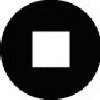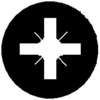 You see them everywhere, from the tiny ones securing the battery compartments of childrens' toys to the most exotic varieties imaginable designed to only be able to be turned with equally exotic tools, usually for the purpose of ensuring that bathroom partitions aren't dismantled by drunken party-goers, but did you know that the humble screw first came into common use nearly 2000 years ago?
You see them everywhere, from the tiny ones securing the battery compartments of childrens' toys to the most exotic varieties imaginable designed to only be able to be turned with equally exotic tools, usually for the purpose of ensuring that bathroom partitions aren't dismantled by drunken party-goers, but did you know that the humble screw first came into common use nearly 2000 years ago?
We didn't either, but according to arcticpenguin, a community member at Instructables, screw-shaped tools made from wood first began to be incorporated in wine and olive presses sometime in the first century. Unlike today's screws however, the earliest versions had a hole in their shaft, which allowed a rod to be inserted for turning.
But wait, that's not all! The venerable arcticpenguin has gone far beyond simply outlining the history of the screw - he's also gone to the trouble of explaining the advantages and disadvantages of each of the various types of screw head drive designs in use throughout much of the world today! (HT: Core77) Here's a quick sampling for several of the most common designs in use today, which we've either quoted or paraphrased from arcticpenguin's original commentary:
| Advantages and Disadvantages of Different Screw Drive Designs |
| Screw Head | Name | Advantages | Disadvantages |
 | Cut Slot Drive | - Most people have a screwdriver that will fit this design (sort of).
- Worn drivers are easily reground.
- A new screwhead slot can easily be cut with a hacksaw.
| - The slotted head is the worst screw drive system, and while very common, it is also generally obsolete.
- A screwdriver does not automatically line up with the slot.
- It is easy to get off center.
- The user must keep the axis of the screwdriver aligned with the axis of the screw.
- The driver can engage the head in only two possible positions, at 180 degree to each other.
|
 | Phillips Drive | - In all cross drive systems the driver will self-align with the fastener.
- Phillips is designed so that when excess torque is applied it will cam-out rather than ream the recess and destroy the bit, as at the time of its invention, torque sensing automatic screwdrivers did not exist.
- Easy to insert.
| - The tapered design that allows cam-out can become a problem as the tooling that forges the recess in the head of the screws begins to show signs of wear. The recess becomes more and more shallow, which means the driver will bottom out too soon and will cause the driver to cam-out early.
- Difficult to back out. The main disadvantage is the screwdriver pops out too readily, stripping the screw, gouging the work, and in general transferring all the problems that were formerly with the Slot design.
- Consumers are likely to think that any screw head with a cross drive recess is a Phillips, which can lead to problems.
|
 | Robertson Drive | - A square recess drive allowed the screw to be placed on the driver prior to the screw being placed in position, so for the first time ever you could start a screw overhead or in a tight spot without an extra hand holding the screw onto the driver.
- A Robertson head on a screw is much better than a slot head because the screwdriver has great resistance to cam-out of the screw's head during installation and 4 possible positions to insert the driver.
- The Robertson drive design utilizes a "Morse-like" taper so the screw will stick to the bit even when held straight down. This taper allows the tool bit to insert deeper into the recess for more contact surface and thus less cam-out.
| - Robertson screwdrivers are available in 6 standard tip-sizes, none metric.
|
 | Pozidriv | - The largest advantage it offers is that, when used with the correct tooling in good condition, it does not cam out, allowing great torque to be applied.
| - The chief disadvantage of Pozidriv screws is that they are visually quite similar to Phillips, thus many people are unaware of the difference or do not own the correct drivers for them, and use incorrect screwdrivers. This results in difficulty in unscrewing the screw and in damage to the slot, rendering any subsequent use of a correct screwdriver unsatisfactory.
- There are additional makings on the head of Pozidriv screws, known as "tick" marks, single lines at 45 degrees to the cross recess to identify them. In addition, Pozidriv also does not have the rounded corners that the Phillips screw drive has.
|
Labels: none really, technology
 You see them everywhere, from the tiny ones securing the battery compartments of childrens' toys to the most exotic varieties imaginable designed to only be able to be turned with equally exotic tools, usually for the purpose of ensuring that bathroom partitions aren't dismantled by drunken party-goers, but did you know that the humble screw first came into common use nearly 2000 years ago?
You see them everywhere, from the tiny ones securing the battery compartments of childrens' toys to the most exotic varieties imaginable designed to only be able to be turned with equally exotic tools, usually for the purpose of ensuring that bathroom partitions aren't dismantled by drunken party-goers, but did you know that the humble screw first came into common use nearly 2000 years ago? 


